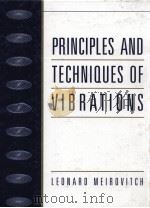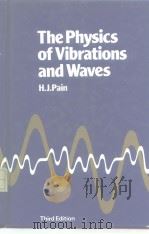《FUNDAMENTALS OF VIBRATIONS》
| 作者 | LEONARD MEIROVITCH 编者 |
|---|---|
| 出版 | 未查询到或未知 |
| 参考页数 | 806 |
| 出版时间 | 没有确切时间的资料 目录预览 |
| ISBN号 | 无 — 求助条款 |
| PDF编号 | 819596118(仅供预览,未存储实际文件) |
| 求助格式 | 扫描PDF(若分多册发行,每次仅能受理1册) |

1 Concepts from Vibrations1
1.1 Newton’s Laws2
1.2 Moment of a Force and Angular Momentum5
1.3 Work and Energy6
1.4 Dynamics of Systems of Particles10
1.5 Dynamics of Rigid Bodies14
1.5.1 Pure translation relative to the inertial space15
1.5.2 Pure rotation about a fixed point16
1.5.3 General planar motion referred to the mass center18
1.6 Kinetic Energy of Rigid Bodies in Planar Motion21
1.6.1 Pure translation relative to the inertial space21
1.6.2 Pure rotation about a fixed point22
1.6.3 General planar motion referred to the mass center22
1.7 Characteristics of Discrete System Components23
1.8 Equivalent Springs,Dampers and Masses27
1.9 Modeling of Mechanical Systems39
1.10 System Differential Equations of Motion44
1.11 Nature of Excitations48
1.12 System and Response Characteristics.The Superposition Principle53
1.13 Vibration about Equilibrium Points57
1.14 Summary66
Problems67
2 Response of Single-Degree-of-Freedom Systems to Initial Excitations80
2.1 Undamped Single-Degree-of-Freedom Systems.Harmonic Oscillator81
2.2 Viscously Damped Single-Degree-of-Freedom Systems87
2.3 Measurement of Damping94
2.4 Coulomb Damping.Dry Friction98
2.5 Plotting the Response to Initial Excitations by MATLAB101
2.6 Summary102
Problems103
3 Response of Single-Degree-of-Freedom Systems to Harmonic and Periodic Excitations109
3.1 Response of Single-Degree-of-Freedom Systems to Harmonic Excitations110
3.2 Frequency Response Plots114
3.3 Systems with Rotating Unbalanced Masses120
3.4 Whirling of Rotating Shafts122
3.5 Harmonic Motion of the Base128
3.6 Vibration Isolation131
3.7 Vibration Measuring Instruments132
3.7.1 Accelerometers——high frequency instruments133
3.7.2 Seismometers——low frequency instruments135
3.8 Energy Dissipation.Structural Damping137
3.9 Response to Periodic Excitations.Fourier Series141
3.10 Frequency Response Plots by MATLAB149
3.11 Summary150
Problems151
4 Response of Single-Degree-of-Freedom Systems to Nonperiodic Excitations157
4.1 The Unit Impulse.Impulse Response158
4.2 The Unit Step Function.Step Response162
4.3 The Unit Ramp Function.Ramp Response165
4.4 Response to Arbitrary Excitations.The Convolution Integral168
4.5 Shock Spectrum174
4.6 System Response by the Laplace Transformation Method.Transfer Function177
4.7 General System Response184
4.8 Response by the State Transition Matrix186
4.9 Discrete-Time Systems.The Convolution Sum189
4.10 Discrete-Time Response Using the Transition Matrix198
4.11 Response by the Convolution Sum Using MATLAB201
4.12 Response by the Discrete-Time Transition Matrix Using MATLAB202
4.13 Summary203
Problems204
5 Two-Degree-of-Freedom Systems208
5.1 System Configuration209
5.2 The Equations of Motion of Two-Degree-of-Freedom Systems211
5.3 Free Vibration of Undamped Systems.Natural Modes215
5.4 Response to Initial Excitations224
5.5 Coordinate Transformations.Coupling225
5.6 Orthogonality of Modes.Natural Coordinates229
5.7 Beat Phenomenon233
5.8 Response of Two-Degree-of-Freedom Systems to Harmonic Excitations238
5.9 Undamped Vibration Absorbers240
5.10 Response of Two-Degree-of-Freedom Systems to Nonperiodic Excitations243
5.11 Response to Nonperiodic Excitations by the Convolution Sum248
5.12 Response to Initial Excitations by MATLAB250
5.13 Frequency Response Plots for Two-Degree-of-Freedom Systems by MATLAB252
5.14 Response to a Rectangular Pulse by the Convolution Sum Using MATLAB252
5.15 Summary254
Problems255
6 Elements of Analytical Dynamics262
6.1 Degrees of Freedom and Generalized Coordinates263
6.2 The Principle of Virtual Work265
6.3 The Principle of D’Alembert267
6.4 The Extended Hamilton’s Principle268
6.5 Lagrange’s Equations273
6.6 Summary276
Problems277
7 Multi-Degree-of-Freedom Systems280
7.1 Equations of Motion for Linear Systems281
7.2 Flexibility and Stiffness Influence Coefficients285
7.3 Properties of the Stiffness and Mass Coefficients290
7.4 Lagrange’s Equations Linearized about Equilibrium294
7.5 Linear Transformations.Coupling297
7.6 Undamped Free Vibration.The Eigenvalue Problem301
7.7 Orthogonality of Modal Vectors309
7.8 Systems Admitting Rigid-Body Motions310
7.9 Decomposition of the Response in Terms of Modal Vectors316
7.10 Response to Initial Excitations by Modal Analysis320
7.11 Eigenvalue Problem in Terms of a Single Symmetric Matrix323
7.12 Geometric Interpretation of the Eigenvalue Problem325
7.13 Rayleigh’s Quotient and Its Properties331
7.14 Response to Harmonic External Excitations336
7.15 Response to External Excitations by Modal Analysis337
7.15.1 Undamped systems337
7.15.2 Systems with proportional damping340
7.16 Systems with Arbitrary Viscous Damping345
7.17 Discrete-Time Systems355
7.18 Solution of the Eigenvalue Problem.MATLAB Programs359
7.19 Response to Initial Excitations by Modal Analysis Using MATLAB361
7.20 Response by the Discrete-Time Transition Matrix Using MATLAB363
7.21 Summary363
Problems365
8 Distributed-Parameter Systems:Exact Solutions374
8.1 Relation between Discrete and Distributed Systems.Transverse Vibration of Strings375
8.2 Derivation of the String Vibration Problem by the Extended Hamilton Principle380
8.3 Bending Vibration of Beams383
8.4 Free Vibration.The Differential Eigenvalue Problem389
8.5 Orthogonality of Modes.Expansion Theorem403
8.6 Systems with Lumped Masses at the Boundaries408
8.7 Eigenvalue Problem and Expansion Theorem for Problems with Lumped Masses at the Boundaries414
8.8 Rayleigh’s Quotient.The Variational Approach to the Differential Eigenvalue Problem423
8.9 Response to Initial Excitations431
8.10 Response to External Excitations439
8.11 Systems with External Forces at Boundaries443
8.12 The Wave Equation447
8.13 Traveling Waves in Rods of Finite Length449
8.14 Summary457
Problems458
9 Distributed-Parameter Systems:Approximate Methods464
9.1 Discretization of Distributed-Parameter Systems by Lumping465
9.2 Lumped-Parameter Method Using Influence Coefficients468
9.3 Holzer’s Method for Torsional Vibration473
9.4 Myklestad’s Method for Bending Vibration484
9.5 Rayleigh’s Principle493
9.6 The Rayleigh-Ritz Method499
9.7 An Enhanced Rayleigh-Ritz Method516
9.8 The Assumed-Modes Method.System Response523
9.9 The Galerkin Method529
9.10 The Collocation Method533
9.11 MATLAB Program for the Solution of the Eigenvalue Problem by the Rayleigh-Ritz Method539
9.12 Summary541
Problems543
10 The Finite Element Method549
10.1 The Finite Element Method as a Rayleigh-Ritz Method550
10.2 Strings,Rods and Shafts554
10.3 Higher-Degree Interpolation Functions563
10.4 Beams in Bending Vibration574
10.5 Errors in the Eigenvalues581
10.6 Finite Element Modeling of Trusses583
10.7 Finite Element Modeling of Frames597
10.8 System Response by the Finite Element Method604
10.9 MATLAB Program for the Solution of the Eigenvalue Problem by the Finite Element Method608
10.10 Summary611
Problems612
11 Nonlinear Oscillations616
11.1 Fundamental Concepts in Stability.Equilibrium Points617
11.2 Small Motions of Single-Degree-of-Freedom Systems from Equilibrium628
11.3 Conservative Systems.Motions in the Large639
11.4 Limit Cycles.The van der Pol Oscillator644
11.5 The Fundamental Perturbation Technique646
11.6 Secular Terms649
11.7 Lindstedt’s Method652
11.8 Forced Oscillation of Quasi-Harmonic Systems.Jump Phenomenon656
11.9 Subharmonics and Combination Harmonics663
11.10 Systems with Time-Dependent Coefficients.Mathieu’s Equation667
11.11 Numerical Integration of the Equations of Motion.The Runge-Kutta Methods672
11.12 Trajectories for the van der Pol Oscillator by MATLAB679
11.13 Summary680
Problems682
12 Random Vibrations685
12.1 Ensemble Averages.Stationary Random Processes686
12.2 Time Averages.Ergodic Random Processes689
12.3 Mean Square Values and Standard Deviation691
12.4 Probability Density Functions692
12.5 Description of Random Data in Terms of Probability Density Functions699
12.6 Properties of Autocorrelation Functions702
12.7 Response to Arbitrary Excitations by Fourier Transforms703
12.8 Power Spectral Density Functions708
12.9 Narrowband and Wideband Random Processes710
12.10 Response of Linear Systems to Stationary Random Excitations718
12.11 Response of Single-Degree-of-Freedom Systems to Random Excitations722
12.12 Joint Probability Distribution of Two Random Variables727
12.13 Joint Properties of Stationary Random Processes730
12.14 Joint Properties of Ergodic Random Processes733
12.15 Response Cross-Correlation Functions for Linear Systems735
12.16 Response of Multi-Degree-of-Freedom Systems to Random Excitations738
12.17 Response of Distributed-Parameter Systems to Random Excitations743
12.18 Summary746
Problems748
Appendix A.Fourier Series752
A.1 Orthogonal Sets of Functions752
A.2 Trigonometric Series754
A.3 Complex Form of Fourier Series757
Appendix B.Laplace Transformation759
B.1 Definition of the Laplace Transformation759
B.2 Transformation of Derivatives760
B.3 Transformation of Ordinary Differential Equations760
B.4 The Inverse Laplace Transformation761
B.5 Shifting Theorems761
B.6 Method of Partial Fractions762
B.7 The Convolution Integral.Borel’s Theorem765
B.8 Table of Laplace Transform Pairs767
Appendix C.Linear Algebra768
C.1 Matrices768
C.1.1 Definitions768
C.1.2 Matrix algebra770
C.1.3 Determinant of a square matrix772
C.1.4 Inverse of a matrix774
C.1.5 Transpose,inverse and determinant of a product of matrices775
C.1.6 Partitioned matrices776
C.2 Vector Spaces777
C.2.1 Definitions777
C.2.2 Linear dependence778
C.2.3 Bases and dimension of vector spaces778
C.3 Linear Transformations779
C.3.1 The concept of linear transformations779
C.3.2 Solution of algebraic equations.Matrix inversion781
Bibliography787
Index789
《FUNDAMENTALS OF VIBRATIONS》由于是年代较久的资料都绝版了,几乎不可能购买到实物。如果大家为了学习确实需要,可向博主求助其电子版PDF文件。对合法合规的求助,我会当即受理并将下载地址发送给你。
高度相关资料
-
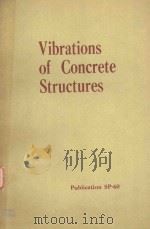
- VIBRATIONS OF CONCRETE STRUCTURES
- 1979 COPYRIGHT
-
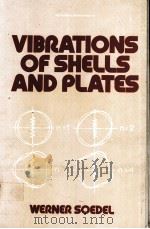
- VIBRATIONS OF SHELLS AND PLATES
- MARCEL DEKKER,INC.
-
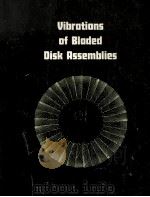
- Vibrations of Bladed Disk Assemblies
- 1983 THE AMERICAN SOCIETY OF MECHANICAL ENGINEERS
-
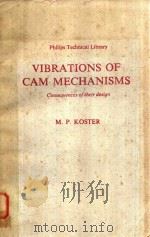
- VIBRATIONS OF CAM MECHANISMS
- 1974 MACMILLAN
-

- VIBRATIONS OF ENGINEERING STRUCTURES
- 1976 COMPUTIONAL MECHANICS
-

- VIBRATIONS
- 1965 LONDON.BLACKIE & SON LIMITED .GLASGOW
-

- VIBRATIONS
- 1968 Thunder's Mouth Press
提示:百度云已更名为百度网盘(百度盘),天翼云盘、微盘下载地址……暂未提供。➥ PDF文字可复制化或转WORD

